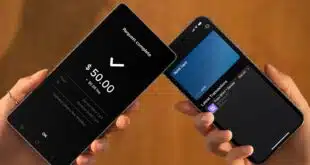Slow acceptance among merchants and consumers appears to be the underlying cause for Bling Nation’s decision to suspend operation of its PayConnect and FanConnect mobile services. Palo Alto, Calif.-based Bling said earlier this week that it is pausing operations to retool its services in response to feedback from merchants and users.
The suspension is likely to leave Bling far behind competitors in a market that is developing fast and attracting major players, including wireless carriers and the Web search giant Google Inc. , observers say. Officials from the company were not available for further comment.
Analysts contend that Bling’s inability to deliver new customers to merchants hindered the appeal of its payment and loyalty programs to merchants. “If a payments company can’t deliver a substantial base of new customers to merchants, there is not a strong enough value proposition for merchants to support it,” says Rick Oglesby, a senior analyst with Boston-based Aite Group. “Bling has previously stated that its payment offering was a commodity and it appears they could not deliver a large enough customer base outside of what PayPal offered. Access to large segments of new customers is a potent value proposition for merchants.”
Bling began testing funding of its accounts through PayPal in July 2010 and in October was included in PayPal Inc.'s iPhone app.
Since its founding in 2008, Bling’s business model was best described as a highly localized approach. Proprietary direct debit and loyalty programs were offered to merchants in communities where local banks hold both consumer and merchant accounts. The model allowed for on-us settlement.
Bling relied on contactless stickers affixed to phones to initiate payments at the point-of-sale. Tapping the handset on point-of-sale readers, called “Blingers,” debited the consumer’s account.
In late 2010, Bling added FanConnect, a social-media application that allowed consumers to “like” a business on Facebook and share information about merchants and special offers within their Facebook community, which provided merchants with an easy entrée into social networking. Bling planned to support the program with analytics and customer-relations management tools for merchants.
“I thought Bling was a good product for merchants and that it offered lots of opportunities for value,” says Brad Rose, vice president of Information Technology and Security for La Junta, Colo.-based The State Bank, an early adopter of Bling that received a letter from the company saying it was ceasing operations.
“Unfortunately, our merchants did not see that value,” continues Rose. “Not only was there reluctance to accept Bling, but in some cases a little arm twisting was needed to get merchants to sign up.”
The greatest resistance within the merchant community came from the large local merchant and merchant chains, according to Rose. “The large merchants either did not want to talk about Bling, told us they weren’t interested, or needed corporate approval to go ahead,” he adds. “With no monthly fee and interchange rates 50% less than Visa and MasterCard there was certainly value to it, especially for smaller merchants that compete with large merchants.”
Although Bling’s immediate future is uncertain, the company said in an e-mail that the “Bling Nation leadership team remains intact and we feel that we have a winning combination that will dominate these areas in the long term.”
Just what Bling’s next step will be is anyone’s guess. George Peabody, director of emerging technology advisory services for Maynard, Mass.-based Mercator Advisory Group says he would not be surprised to see Bling rebrand in order to distance itself from past merchant perceptions.
Other analysts argue that any attempted comeback will mean starting from a position far behind the competition. Most prominent among these competitors now is Google, which launched a mobile-payments and -offers service late last month that relies on embedded near-field communication chips for contactless transactions.
“There is no question Bling will be playing catch-up by the time it relaunches,” says Oglesby. “It’s quite clear that the Google wallet is going to be more about the value of the marketing solutions it offers than payments. Google has a lot of assets and brand recognition. The question for Bling is whether it can learn from its failures and the successes of other players in the payments market.”





